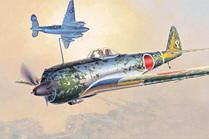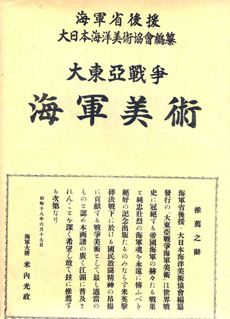 |
|
|
Japanese WW2 Aviation Art
Another inscription on the Japanese package.
WW2 Historical Exhibit.

Mitsubishi A6M5 Zero
Japanese WW2 Propaganda Aviation Art Prints. These are Very Rare Art Prints made in Japan in WW2.(22) WAPA217 Takashi Naval Parachute Troop Rushing into the Enemy Camp January 11, 1942, the capture of Manado of Celebes Island |
|
Model Airplanes * North Pole And Arctic Cruises * Airplane Books * Airplane Videos * * |
| Jet Fighters | WW2 Aircraft | WW1 Aircraft | Ships | Spacecraft | Tanks | Acoustic Guitars for Sale |
 |
If you have any information or want information about
this collection of
WW2 Japanese Aviation Art contact Annette at Downeast Nautical
Click Here to
email Annette.
|
|
Japanese Aviation Art Home Page |
|
Click Here to go
to the
Japanese Surrender Home Page.
Click Here for the Full Aviation Art Collection at YellowAirplane.com
Or Here for Japanese WWII Aircraft Models
| This letter is from Mr. Niigata who tried
to translate some of the text on the
package that this aviation art was found in. I don’t know how important it is for you to read this Japanese Text, but page 1 is just a Forward or Preface and introduction of the magazine (first issue in 1943) called “Daitouwa Sensoo Kaingun Bijyutsu” means World War II Navy Art and written by Navy rep and Artist rep. The text is written using all of the words and phrases of War time Japanese language (used only in these period). It takes a real pro to translate it to a meaningful English sentence.
Page 2 . I don’t know where is came from, but
only sentence make sense to me is , |
|
Dear Mr. Niigata,
This is some extremely good information for me. I am
understanding more every day. People commonly ask me if I
had a nice day. If I learn something new, yes I had a very
nice day. If I don't learn anything, there really wasn't
any excitement and no adventure. I am currently studying
Russian since my business works with the Russians very
often. Siberian Russian is different than than Moscow
Russian. They have no problem reading each others written
language, however, when I try to look up words from my
Siberian friend in my Russian dictionary, I cannot find the
words. A Russian girl at the store has to translate letters
for me. But the Siberian language is changing also. When I
was in Siberia, as city called Khatanga where the famous
Woolly Mammoth resides, I noticed this. In their old
language the letter X is pronounced as an English H, but by
starting the word in their throat. The younger people just
pronounce X as an English H. Khatanga in Russian starts
with an X, but the people in Moscow pronounce the city with
a K since most maps also use Khatanga, not the X to start
the word. I found in very old maps, at our local
university, Khatanga was written as Hatanga, which is closer
to the real pronunciation.
Click Here
to see the Khatanga Exhibit.
The Wikipedia article that you sent me has taught me very
much about the Japanese Writing System. I have heard of the other forms of the Japanese
language, but I did not really understand until today. So I
have had a nice day today.
It will be very interesting, because Thursday I am meeting
with a Japanese lady that will try to translate the letter
for me also. She said that she would have no problem,
however, she is about my age, 53, and I think that she will
have a surprise. We are meeting at a Chinese restaurant,
so I will have the Chinese lady look at the writing also.
A Chinese girl that I knew could read some Japanese.
Hiroshima was one word that we have discussed. In Chinese
it is written the same and can be read in their language the
same, but the pronunciation is so much different that the
spoken language absolutely could not be understood. When I
asked her why, she told me that the written words were very
similar. She was from Beijing.
Thank you so much for giving me a nice day, because I
learned something about much more than we have talked about
here.
Thanks again, your friend,
Jeff.
|
Click Here for the
Full
Aviation Art Gallery at YellowAirplane.com
World War II Propaganda, Cartoons, Film, Music, & Art
Propaganda Art From Colonial Korea
A Critical Comparison Between Japanese and American
Propaganda during World War II.
|
This is a Very Rare Aviation Art
Collection
Translation by Nubuo Ichihara |
Look at these exhibits and tell me what these men really fought for.
the 34th fighter Squadron
USS Kitty Hawk
Read
the Webmasters Story, Why God Sent Me to the North Pole
her to see how I have to live and what it looks like to be
a disabled Vet.
| . |